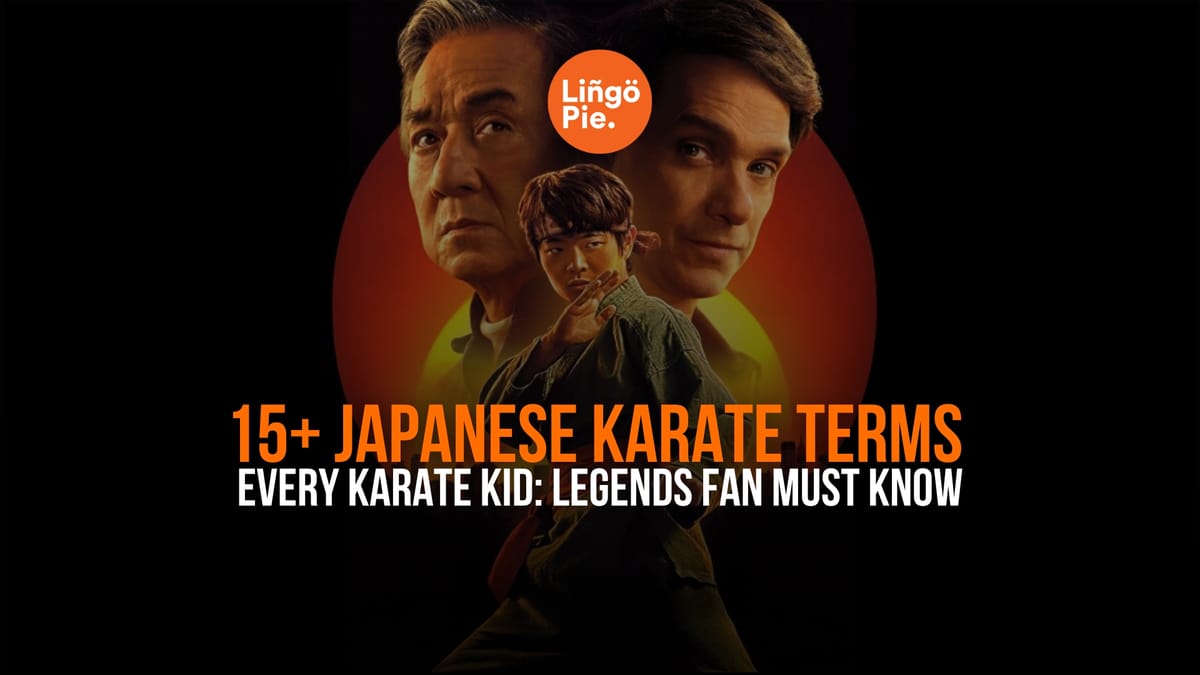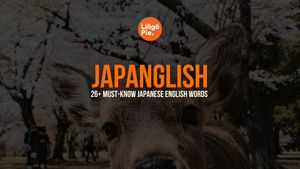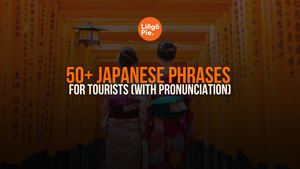The martial arts world just got a major boost with the release of Karate Kid: Legends (2025), and honestly? It's the perfect time to get inspired to learn Japanese. So in this post, let's boost your Japanese with these key karate terms you'll hear from the dojo. Once you get hooked on these words, you'll want to keep going with something like Lingopie to learn Japanese even more.
- Japanese Verb Conjugation Guide
- What's The Best Way To Learn Japanese? [Guide]
- How To Say “I” And “Me” In Japanese: A Guide To Watashi, Boku, Ore, And More

What Is Karate Kid: Legends?
Karate Kid: Legends is a 2025 American martial arts drama film directed by Jonathan Entwistle and written by Rob Lieber. It is the sixth film in The Karate Kid franchise following the 2010 film of the same name and is set after the events of the television series Cobra Kai (2018–2025).
The story follows Li Fong (played by Ben Wang), a kung fu prodigy who relocates from China to New York City with his mother. When Li struggles to adapt to his new life and attracts unwanted attention from Connor Day, a local karate champion, he finds guidance from two legendary mentors: Mr. Han (Jackie Chan) and Daniel LaRusso (Ralph Macchio).
Karate Terms in Japanese
Ready to sound like you belong in the dojo? These essential terms will have you speaking like a seasoned karateka in no time. Don't worry about perfect pronunciation at first—even seasoned martial artists had to start somewhere!
The Dojo Essentials
Dojo (道場, dōjō) - [DOH-joh]
This is your training hall, but it literally means "place of the Way." The dojo should be treated like a special place where students should hold themselves to a higher standard of behavior. Think of it as more than just a gym—it's where you develop both body and spirit.
Sensei (先生, sensei) - [SEN-say]
Sensei means "the one who comes before," teacher, instructor, or master. In Japanese, it literally means "a person born before another" or "one who comes before."
Gi (着, gi) - [GHEE]
The gi or Karate-gi is a traditional uniform used during Karate training. Sometimes known as dogi, the gi is generally white and is made of thick cotton or canvas. Your uniform represents equality in the dojo since everyone wears the same simple, clean outfit regardless of their background.
Essential Commands You'll Hear Daily
Rei (礼, rei) - [RAY]
Rei means respect or bow. This simple bow carries enormous meaning—it shows respect for your instructors, fellow students, and the art itself. You'll use this constantly, from entering the dojo to beginning and ending practice sessions.
Hajime (始め, hajime) - [ha-JEE-may]
Hajime literally means "begin" in Japanese. Like yame, hajime is a verbal command given by the Sensei in order to start Kihon, Kata, or Kumite or any other practices.
Yame (止め, yame) - [ya-MAY]
Yame literally means "stop" in Japanese. Like hajime, yame is a verbal command given by the Sensei in order to stop Kihon, Kata, or Kumite or again, any other practices.
Core Training Concepts
Kata (型, かた) - [KA-ta]
Kata means "form". Kata are used in many traditional Japanese arts such as theater forms like kabuki and schools of tea ceremony (chado), but are most commonly known for the presence in the martial arts. These are choreographed sequences of movements that look like solo fighting against imaginary opponents.
Kihon (基本, きほん) - [KEE-hone]
Kihon is a Japanese term meaning "basics" or "fundamentals." The term is used to refer to the basic techniques that are taught and practiced as the foundation of most Japanese martial arts. Every karate master will tell you: without solid kihon, advanced techniques crumble.
Kumite (組手, kumite) - [koo-MEE-tay]
Kumite means "the meeting of hands" or sparring. This is where theory meets reality—controlled fighting practice where you test your skills against a live opponent while maintaining respect and control.
Japanese Numbers For Karate
Every karate class uses Japanese counting, so you'll want these numbers down cold:
- Ichi (一) - [EE-chee] - One
- Ni (二) - [NEE] - Two
- San (三) - [SAHN] - Three
- Shi/Yon (四) - [SHEE/YOHN] - Four
- Go (五) - [GOH] - Five
- Roku (六) - [ROH-koo] - Six
- Shichi/Nana (七) - [SHEE-chee/NAH-nah] - Seven
- Hachi (八) - [HAH-chee] - Eight
- Ku/Kyū (九) - [KOO/KYOO] - Nine
- Jū (十) - [JOO] - Ten
Note: yon is usually four, shi is only used in certain situations because "Shi" also means "Death". Similar to "shi", "shichi" is only used in certain situations, otherwise "nana" is more commonly used since Japanese culture avoids numbers that sound like death.

Martial Arts Slang in Japanese
Now here's where things get really interesting. Beyond formal dojo language, there's a whole world of martial arts slang that adds flavor and personality to your training conversations.
Respectful Slang and Expressions
Osu/Oss (押忍, osu) - [OH-soo]
Oss or Osu means "Push On Through Difficulties." Nevertheless, this term is used in many different ways and is often used by non-Japanese Karate students for "Thank you," "I understand," etc. Oss (Osu) is a kind of respectful catch-all phrase.
Onegaishimasu (お願いします, onegaishimasu) - [oh-neh-guy-shee-mas]
Onegaishimasu means "please". In traditional karate styles like Goju Ryu, you are expected to say onegaishimasu which is roughly translated as "please teach me" when entering a dojo, bowing to the instructor at the opening ceremony, before using a training tool and before performing a kata.
Philosophical Terms That Sound Cool
Ki (気, ki) - [KEE]
Ki means a type of intrinsic energy. Known as Qi or Chi in Chinese martial arts. While you can't scientifically measure ki, every martial artist talks about it—that inner energy, focus, and presence that separates good technique from great technique.
Zanshin (残心, zanshin) - [ZAHN-sheen]
Zanshin means vigilance or awareness after a technique has been performed. It's that state of relaxed alertness where you're ready for whatever comes next. In movies, it's that moment when the hero finishes a move but stays ready.
Mushin (無心, mushin) - [moo-SHEEN]
Mushin means void or state of no mind. This isn't about being empty-headed—it's about being so present and focused that your body moves without your conscious mind getting in the way. It's what athletes call "being in the zone."
Combat-Ready Vocabulary
Kiai (気合, kiai) - [kee-AH-ee]
Kiai is a Japanese term used to describe the quick and powerful shout used in martial arts when performing an attacking move. A well-executed kiai doesn't involve the use of the throat, but of the diaphragm that expels air out of the lungs.
Waza (技, waza) - [WAH-zah]
Waza means techniques. Whether you're talking about a specific move or discussing technique in general, this word covers all your martial arts moves from basic blocks to advanced combinations.
Build Your Japanese Faster With Lingopie
These karate terms are just the beginning of an incredible journey into Japanese language and culture. Once you've mastered "sensei," "dojo," and "kata," you'll naturally want to understand what your favorite anime characters are saying, decode song lyrics, or follow along with Japanese movies and shows without subtitles.
Want to improve your Japanese further? Then learn Japanese with Lingopie today. Whether you're rewatching classic martial arts films or exploring new Japanese content, Lingopie transforms every viewing session into an active learning experience.
Curious? Give it a try now for FREE when you click below!









